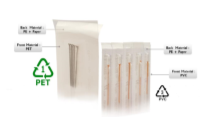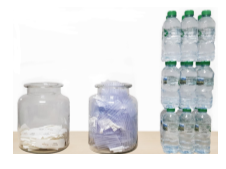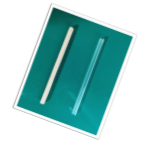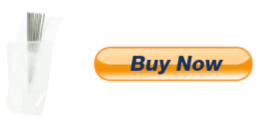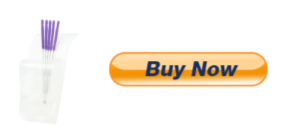We use cookies to make your experience better. To comply with the new e-Privacy directive, we need to ask for your consent to set the cookies. Learn more.
NEW ecological packaging and plastic free guide tubes 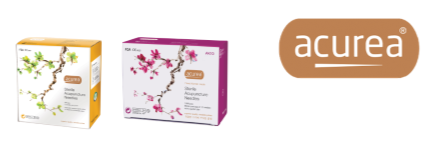
Introduction:
Through TCM, we aim to improve the lives and wellbeing of our patients. To this end, the quality and safety of treatments should be at the forefront of every practitioner’s mind as factors which have a direct impact on the patient.
Yet one aspect that is often overlooked is the environmental impact of how we treat. Although seemingly indirect, neglecting this factor affects not only our current patients but also the whole world, both now and for generations to come.
Given the increase in acupuncture in many different clinics, it is now becoming crucial to consider our environmental footprint and examine ways to reduce this.
Read below what Balance Healthcare in association with JCM are doing to make our industry a leader in this field.
Packaging:
Volume, composition, recyclability, biodegradability, by-products of incineration
Needle packaging:
For practitioners and patients, packaging volume and waste is the most immediate environmental issue they are confronted with. Reducing packaging volume without compromising sterility is key, as well as using materials that are more sustainable, biodegradable and/or have less of an impact if processed through landfill or incineration. With our new range of Eco needles we have addressed these issues in the following ways.
Needle pouch:
Current needle blister packs are made of PVC. There are many disadvantages of PVC packaging which is commonly used for acupuncture needles. Large amounts of dioxin are produced during the various stages of PVC production and PVC is not generally collected from households for recycling. Our fully recyclable packaging for our needles is made from a combination of PE and paper material for the backing and PET for the clear front.
The use of these materials means the complete pouch is 100% recyclable. When comparing plastic waste from 1,000 needles packed in PVC blister packs to 1,000 needles in our new eco packaging, our new eco packaging is 80% less in weight, which is equal to that of 18 plastic water bottles.
Glassine sleeve for guide tube:
Glassine is a unique grade of paper with many desirable properties and multiple benefits. Glassine paper is also environmentally friendly. It starts from 100% sustainable managed forests and is 100% recyclable and biodegradable, and it will decompose into just CO2 and water.
Guide Tube:
We have replaced the plastic guide tube with bamboo, sourced from sustainable managed forests and 100% biodegradable. Replacing this plastic tube also eliminates the pollutants created in the production of the plastic tubes.
Our tubes are individually protected by Glassine paper which is 100% recyclable and biodegradable and will decompose into just CO2 and water. Fully sterilised, both the tube and glassine protective sleeve is provided independently of the needles in each box. This flexibility offers the practitioner to use as little as one tube per patient or more if required. Excess tubes can be kept, remaining fully sterilised for future use.
Each box of needles will be supplied with 20 bamboo tubes and for a period additional tubes will be available to purchase separately. We are requesting practitioner feedback as to the best number of tubes for each box and will adjust to the ideal number over the coming months.
Raw materials manufacturing:
Energy usage, waste generation and processing.
Needles:
Nowadays, the amount of acupuncture needles produced each month is estimated at 1.5 billion in China alone. However, most of the processes of manufacturing is still in a dreadful state with manual production in poor working conditions resulting in unpredictable quality.
The new Acurea Eco Series are manufactured in Taiwan using high grade surgical stainless steel using the latest automated needle production equipment not found anywhere else. The facilities are GMP, FDA and CE certified and hold ISO13485. Employee working conditions are extremely important to us and the factory owners. This fully automated process ensures consistently high-quality manufacturing, needle tip sharpness and are micro polished.
Needle Coating:
Silicon is widely used by acupuncture manufactures for better insertion. However, it was confirmed to be the causative agent by analytical electron microscopy with an energy dispersive X-ray detector. Several cases are reported as silicone granulomas secondary to acupuncture with silicon-coated needles. (J Clin Investigat Dermatol, January 2014 Vol.:2). Acurea Eco Series needles are coated in Dow Corning® MDX4-4159 50% Medical Grade Dispersion, which is used as a lubricant for cutting edges, including razor blades, scissors and hypodermic needles. This needle oil fully meets the requirements of “Biomedical Grade” tests from ISO 10993-1 institute and decreases the rate of allergy reaction.
NEEDLE STYLES AVAILABLE:
Our needles are currently offered in three presentations. The presentations are based on a combination of historical usage and the need to minimise plastic and other waste.
Korean handle: A traditional Korean style handle with 10 needles per sleeve, with 1,000 needles per box. Box contains 20 individually wrapped and sterilised bamboo guide tubes.
Chinese handle with loop: A traditional Chinese wound handle with loop packed 5 needles per sleeve, with 500 needles per box. Box contains 20 individually wrapped and sterilised bamboo guide tubes.
Japanese Plastic handle: A traditional Japanese plastic handle with 5 needles per sleeve, with 200 needles per box. Box contains 10 individually wrapped and sterilised bamboo guide tubes.
NOT AVAILABLE:
Copper: Copper and stainless steel are commonly used materials in the manufacture of acupuncture needles. Whilst both are well suited for purpose, copper manufacturing is associated with severe environmental hazards such as heavy metal surface water pollution, acid mine drainage and acid rain. Additionally, copper acupuncture needle handles require plating to prevent them from oxidising and forming a green outer layer. Commercial copper plating typically involves a copper-cyanide solution that is highly toxic if drained into the environment.
On the other hand, stainless steel production results in considerably less environmental stress as waste material can be filtered or captured and reused for other purposes such as construction material. Stainless steel needles also do not require plating.
Sterilisation:
Energy usage, toxicity of by-products
Gamma Ray Sterilisation:
In our Acurea Eco range we are using Gamma Ray sterilisation, it is cleaner and safer than traditionally used E.O gas and provides a five-year shelf life thus further reducing waste by prolonging the shelf life by a further two years over the typical three years, using E.O. gas helping practitioners and supply companies better manage stock wastage.
Gamma irradiation and ethylene oxide (EO) sterilisation are commonly used for sterilising single-use medical products. Indeed, most acupuncture needles are currently sterilised using EO. However, EO is toxic, carcinogenic and a severe environmental pollutant.
Thousands of tonnes of EO are released into the atmosphere as a direct consequence of needle sterilisation, causing untold damage to the environment. Additionally, needles are left with EO residues that pose further risks to patients. The UK government’s guide to good manufacturing practice stipulates that EO should only be used in cases where no other sterilisation technique is available and lays down strict guidelines for its use.
In comparison, gamma sterilisation is clean, effective and has low environmental impact. The material used for gamma sterilisation is itself a repurposed material taken from other processes and can also be reused once no longer suitable for sterilisation.
Carbon offset:
Planetary, human and species health and wellness
To help offset our own and your carbon footprint in the transport of our needles we are donating 20p from each Acurea Eco series box sold to the Chinese Medicine Forestry Trust. The trust promotes planetary, human and species health and wellbeing by planting trees and protecting forests throughout the world. Trees absorb carbon dioxide, counter pollution, give forth life-saving oxygen, prevent flooding and promote biodiversity by providing 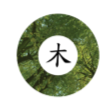
The solution is less pollution. Together we can now make a difference…

